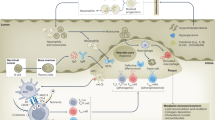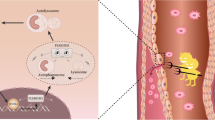Abstract
In response to environmental stimuli, monocytes undergo polarization into classically activated (M1) or alternatively activated (M2) states. M1 and M2 macrophages exert opposing pro- and anti-inflammatory properties, respectively. Electronegative low-density lipoprotein (LDL) (LDL(−)) is a naturally occurring mildly oxidized LDL found in the plasma of patients with hypercholesterolemia, diabetes, and acute myocardial infarction, and has been shown to involve in the pathogenesis of atherosclerosis. In this study, we examined the effects of LDL(−) on macrophage polarization and the involvement of lectin-like oxidized LDL receptor-1 (LOX-1) in this process. THP-1 macrophages were treated with native LDL (nLDL) or LDL(−), and then the expression of M1/M2-related surface markers and cytokines were evaluated. The results show that treatment with LDL(−) resulted in profound increase in proinflammatory cytokines, IL-1β, IL-6, and TNF-α, and M1-surface marker CD86; however, M2-related cytokines, IL-10 and TGF-β, and M2-surface marker CD206 were not changed by LDL(−). Untreated or nLDL-treated cells were used as control. LDL(−)-induced M1 polarization and secretion of proinflammatory cytokines were diminished in LOX-1 knockdown cells. Taken together, the results show that LDL(−) promotes differentiation of human monocytes to M1 macrophages through a LOX-1-dependent pathway, and explore the contribution of LDL(−) and LOX-1 to the development of chronic inflammation in atherosclerosis.





Similar content being viewed by others
Abbreviations
- Arg-1:
-
Arginase-1
- IL:
-
Interleukin
- KD:
-
Knockdown
- LDL:
-
Low-density lipoprotein
- LDL(-):
-
Electronegative LDL
- LOX-1:
-
Lectin-like oxidized LDL receptor-1
- nLDL:
-
Native LDL
- NLRP3:
-
NOD-, LRR-, and pyrin domain-containing protein 3
- NF:
-
Nuclear factor
- oxLDL:
-
Oxidized low-density lipoprotein
- SR:
-
Scavenger receptors
- STEMI:
-
ST-segment elevation myocardial infarction
- TGF:
-
Transforming growth factor
- TNF:
-
tumor necrosis factor
References
Glass, C.K., and J.L. Witztum. 2001. Atherosclerosis. The road ahead. Cell 104: 503–516.
Gordon, S., and F.O. Martinez. 2010. Alternative activation of macrophages: Mechanism and functions. Immunity 32: 593–604.
Liu, Y.C., X.B. Zou, Y.F. Chai, and Y.M. Yao. 2014. Macrophage polarization in inflammatory diseases. International Journal of Biological Sciences 10: 520–529.
Sanchez-Quesada, J.L., S. Benitez, C. Otal, M. Franco, F. Blanco-Vaca, and J. Ordonez-Llanos. 2002. Density distribution of electronegative LDL in normolipemic and hyperlipemic subjects. Journal of Lipid Research 43: 699–705.
Chan, H.C., L.Y. Ke, C.S. Chu, A.S. Lee, M.Y. Shen, M.A. Cruz, J.F. Hsu, et al. 2013. Highly electronegative LDL from patients with ST-elevation myocardial infarction triggers platelet activation and aggregation. Blood 122: 3632–3641.
Lu, J., W. Jiang, J.H. Yang, P.Y. Chang, J.P. Walterscheid, H.H. Chen, M. Marcelli, D. Tang, Y.T. Lee, W.S. Liao, C.Y. Yang, and C.H. Chen. 2008. Electronegative LDL impairs vascular endothelial cell integrity in diabetes by disrupting fibroblast growth factor 2 (FGF2) autoregulation. Diabetes 57: 158–166.
Chang, P.Y., Y.J. Chen, F.H. Chang, J. Lu, W.H. Huang, T.C. Yang, Y.T. Lee, et al. 2013. Aspirin protects human coronary artery endothelial cells against atherogenic electronegative LDL via an epigenetic mechanism: A novel cytoprotective role of aspirin in acute myocardial infarction. Cardiovascular Research 99: 137–145.
Chang, P.Y., S. Luo, T. Jiang, Y.T. Lee, S.C. Lu, P.D. Henry, and C.H. Chen. 2001. Oxidized low-density lipoprotein downregulates endothelial basic fibroblast growth factor through a pertussis toxin-sensitive G-protein pathway: Mediator role of platelet-activating factor-like phospholipids. Circulation 104: 588–593.
Yang, T.C., P.Y. Chang, and S.C. Lu. 2017. L5-LDL from ST-elevation myocardial infarction patients induces IL-1beta production via LOX-1 and NLRP3 inflammasome activation in macrophages. American Journal of Physiology. Heart and Circulatory Physiology 312: H265–H274.
Lai, Y.S., T.C. Yang, P.Y. Chang, S.F. Chang, S.L. Ho, H.L. Chen, and S.C. Lu. 2016. Electronegative LDL is linked to high-fat, high-cholesterol diet-induced nonalcoholic steatohepatitis in hamsters. The Journal of Nutritional Biochemistry 30: 44–52.
Chang, P.Y., J.H. Pai, Y.S. Lai, and S.C. Lu. 2019. Electronegative LDL from rabbits fed with atherogenic diet is highly proinflammatory. Mediators of Inflammation 2019: 6163130.
Hofnagel, O., B. Luechtenborg, K. Stolle, S. Lorkowski, H. Eschert, G. Plenz, and H. Robenek. 2004. Proinflammatory cytokines regulate LOX-1 expression in vascular smooth muscle cells. Arteriosclerosis, Thrombosis, and Vascular Biology 24: 1789–1795.
Yang, T.C., P.Y. Chang, T.L. Kuo, and S.C. Lu. 2017. Electronegative L5-LDL induces the production of G-CSF and GM-CSF in human macrophages through LOX-1 involving NF-kappaB and ERK2 activation. Atherosclerosis 267: 1–9.
Mehta, J.L., N. Sanada, C.P. Hu, J. Chen, A. Dandapat, F. Sugawara, H. Satoh, et al. 2007. 3 Deletion of LOX-1 reduces atherogenesis in LDLR knockout mice fed high cholesterol diet. Circulation Research 100: 1634–1642.
Lu, J., J.H. Yang, A.R. Burns, H.H. Chen, D. Tang, J.P. Walterscheid, S. Suzuki, C.Y. Yang, T. Sawamura, and C.H. Chen. 2009. Mediation of electronegative low-density lipoprotein signaling by LOX-1: A possible mechanism of endothelial apoptosis. Circulation Research 104: 619–627.
Levitan, I., S. Volkov, and P.V. Subbaiah. 2010. Oxidized LDL: Diversity, patterns of recognition, and pathophysiology. Antioxidants & Redox Signaling 13: 39–75.
Rios, F.J., M.M. Koga, M. Pecenin, M. Ferracini, M. Gidlund, and S. Jancar. 2013. Oxidized LDL induces alternative macrophage phenotype through activation of CD36 and PAFR. Mediators of Inflammation 2013: 198193.
Seo, J.W., E.J. Yang, K.H. Yoo, and I.H. Choi. 2015. Macrophage differentiation from monocytes is influenced by the lipid oxidation degree of low density lipoprotein. Mediators of Inflammation 2015: 235797.
van Tits, L.J., R. Stienstra, P.L. van Lent, M.G. Netea, L.A. Joosten, and A.F. Stalenhoef. 2011. Oxidized LDL enhances pro-inflammatory responses of alternatively activated M2 macrophages: A crucial role for Kruppel-like factor 2. Atherosclerosis 214: 345–349.
Oh, J., A.E. Riek, S. Weng, M. Petty, D. Kim, M. Colonna, M. Cella, et al. 2012. Endoplasmic reticulum stress controls M2 macrophage differentiation and foam cell formation. The Journal of Biological Chemistry 287: 11629–11641.
Yang, C.Y., J.L. Raya, H.H. Chen, C.H. Chen, Y. Abe, H.J. Pownall, A.A. Taylor, et al. 2003. Isolation, characterization, and functional assessment of oxidatively modified subfractions of circulating low-density lipoproteins. Arteriosclerosis, Thrombosis, and Vascular Biology 23: 1083–1090.
Chen, C.Y., H.C. Hsu, A.S. Lee, D. Tang, L.P. Chow, C.Y. Yang, H. Chen, et al. 2012. The most negatively charged low-density lipoprotein L5 induces stress pathways in vascular endothelial cells. Journal of Vascular Research 49: 329–341.
Benitez, S., C. Bancells, J. Ordonez-Llanos, and J.L. Sanchez-Quesada. 2007. Pro-inflammatory action of LDL(−) on mononuclear cells is counteracted by increased IL10 production. Biochimica et Biophysica Acta 1771: 613–622.
Shapouri-Moghaddam, A., S. Mohammadian, H. Vazini, M. Taghadosi, S.A. Esmaeili, F. Mardani, B. Seifi, et al. 2018. Macrophage plasticity, polarization, and function in health and disease. Journal of Cellular Physiology 233: 6425–6440.
Moore, K.J., and M.W. Freeman. 2006. Scavenger receptors in atherosclerosis: Beyond lipid uptake. Arteriosclerosis, Thrombosis, and Vascular Biology 26: 1702–1711.
Canton, J., D. Neculai, and S. Grinstein. 2013. Scavenger receptors in homeostasis and immunity. Nature Reviews. Immunology 13: 621–634.
Aoyama, T., T. Sawamura, Y. Furutani, R. Matsuoka, M.C. Yoshida, H. Fujiwara, and T. Masaki. 1999. Structure and chromosomal assignment of the human lectin-like oxidized low-density-lipoprotein receptor-1 (LOX-1) gene. The Biochemical Journal 339 (Pt 1): 177–184.
Sobanov, Y., A. Bernreiter, S. Derdak, D. Mechtcheriakova, B. Schweighofer, M. Duchler, F. Kalthoff, et al. 2001. A novel cluster of lectin-like receptor genes expressed in monocytic, dendritic and endothelial cells maps close to the NK receptor genes in the human NK gene complex. European Journal of Immunology 31: 3493–3503.
Kakutani, M., M. Ueda, T. Naruko, T. Masaki, and T. Sawamura. 2001. Accumulation of LOX-1 ligand in plasma and atherosclerotic lesions of Watanabe heritable hyperlipidemic rabbits: Identification by a novel enzyme immunoassay. Biochemical and Biophysical Research Communications 282: 180–185.
Funding
This study was supported by the Ministry of Science and Technology of Taiwan grant MOST 103-2320-B-002-029-MY2.
Author information
Authors and Affiliations
Corresponding author
Ethics declarations
Conflict of Interest
The authors declare that they have no conflict of interest.
Additional information
Publisher’s Note
Springer Nature remains neutral with regard to jurisdictional claims in published maps and institutional affiliations.
Electronic supplementary material
ESM 1
(DOCX 29 kb)
Rights and permissions
About this article
Cite this article
Chang, SF., Chang, PY., Chou, YC. et al. Electronegative LDL Induces M1 Polarization of Human Macrophages Through a LOX-1-Dependent Pathway. Inflammation 43, 1524–1535 (2020). https://doi.org/10.1007/s10753-020-01229-6
Published:
Issue Date:
DOI: https://doi.org/10.1007/s10753-020-01229-6




